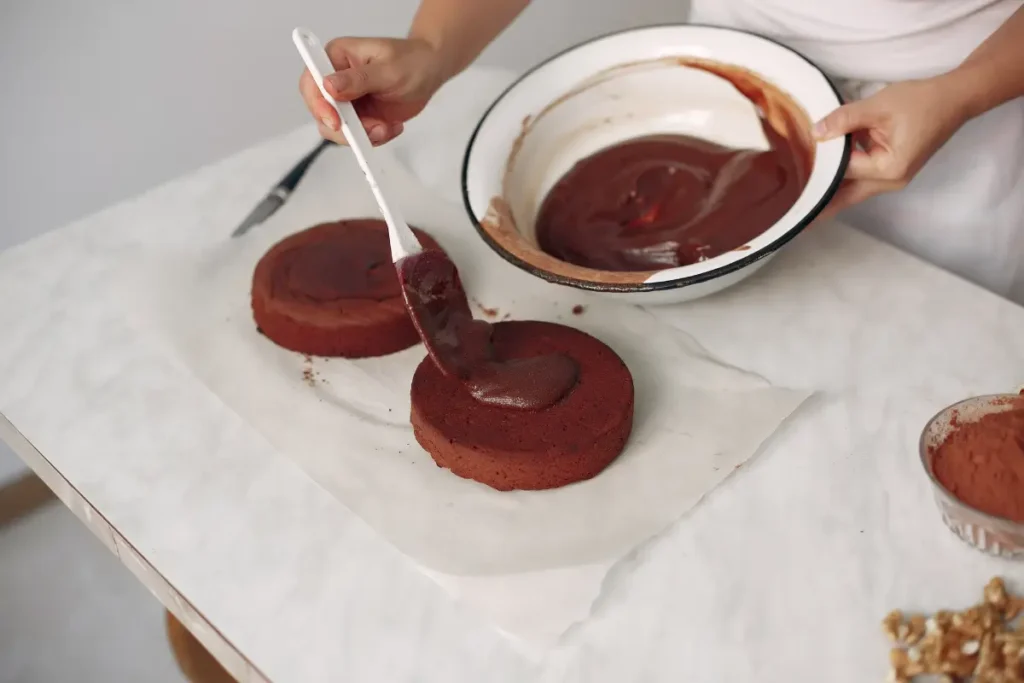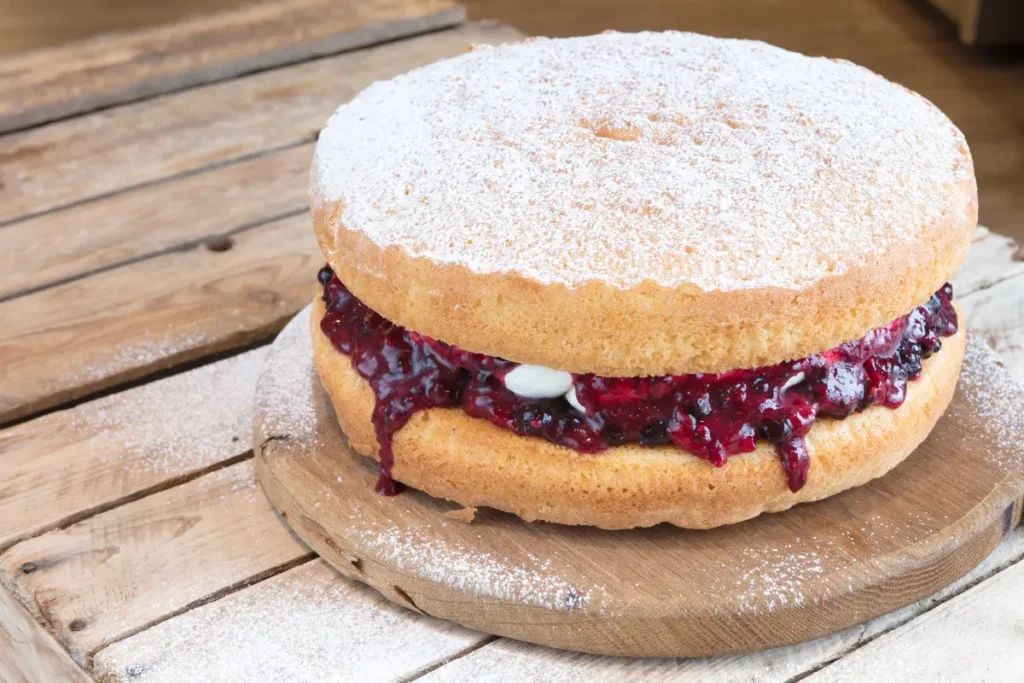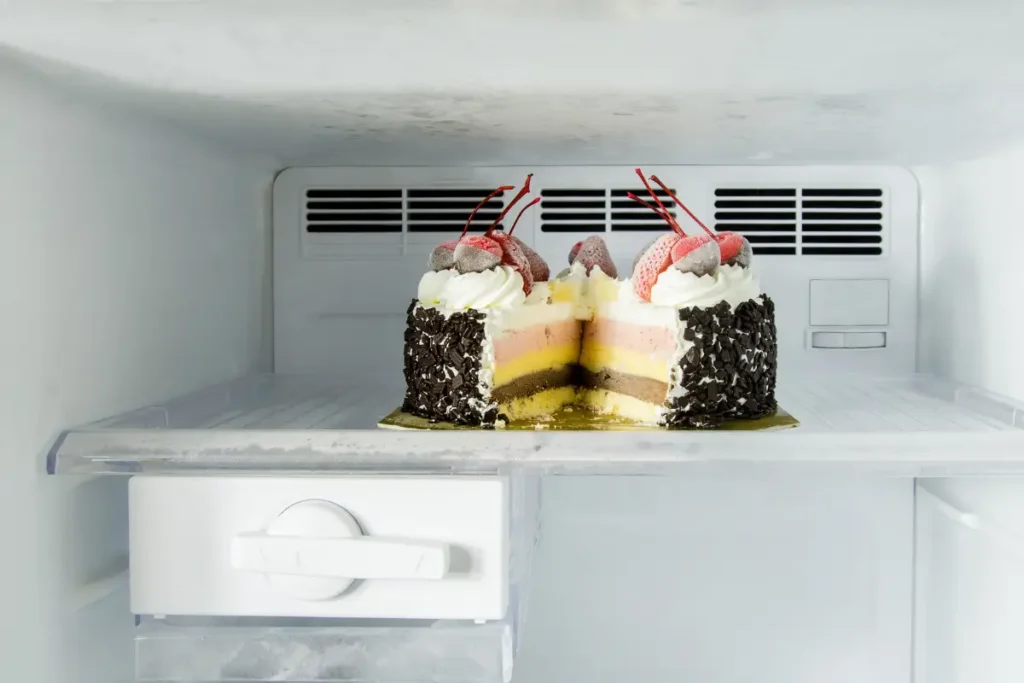
Introduction
Ah, the eternal conundrum for bakers everywhere: how do you keep those juicy, ripe strawberries from turning your masterpiece cake into a soggy mess? It’s a question as old as time—or at least as old as the art of baking itself. Strawberries, with their vibrant color and sweet, tangy flavor, can elevate a simple cake to a delectable treat. However, their high moisture content is a double-edged sword, capable of compromising the delicate texture of your cake, leaving you with a less-than-ideal dessert that’s more mush than a masterpiece.
Fear not, dear baker! The solution isn’t as elusive as it might seem. In fact, with a few tricks up your sleeve, you can ensure your strawberry cake remains fluffy, moist, and, most importantly, structurally sound. Whether you’re a seasoned baker or a novice looking to impress, these 5 proven tips will guide you through the process of incorporating strawberries into your cakes without the dreaded sogginess. For inspiration, check out our delicious Strawberry Tres Leches Cake and Vanilla Cake with Strawberry Filling, which perfectly embody these principles.
So, let’s dive in, shall we? By the end of this post, you’ll be armed with the knowledge to keep your strawberry cake as perfect as a sunny day in June. And who knows? You might just become the go-to baker in your circle when it comes to whipping up this fruity delight.
Tip 1: Use a Barrier Between Strawberries and Cake
Creating a Protective Layer
One of the most effective strategies to prevent your cake from becoming a soggy disappointment is to introduce a barrier between the cake layers and the strawberries. Think of it as a shield; this barrier keeps the moisture of the strawberries from seeping into the cake, ensuring that each bite is as perfect as the last.
How to create this barrier? Well, you’ve got a few options:
- Chocolate Glaze: A thin layer of chocolate glaze over the cake layer not only adds an extra flavor dimension but also acts as an impermeable barrier to strawberry juice. It’s like killing two birds with one stone—you get an additional layer of deliciousness while keeping your cake pristine.
- Apricot Jam: For those who prefer a fruitier touch, a layer of apricot jam can serve the same purpose. The jam solidifies slightly, creating a protective seal against moisture. Plus, the tangy flavor of apricot complements the sweetness of the strawberries beautifully.
- Buttercream Frosting: A classic choice, buttercream frosting, when applied in a thin layer, can effectively block moisture. It’s like wrapping your cake in a cozy blanket, one that’s sweet, rich, and utterly protective.

Why does this work? The logic is simple. By creating a physical barrier, you’re preventing the moisture from the strawberries from directly contacting the cake. This method is particularly useful if you’re planning to assemble your cake ahead of time, as it buys you a few extra hours (even a day) without worrying about sogginess.
So, next time you’re layering that beautiful strawberry cake, remember, a little barrier goes a long way. Not only will it keep your cake’s texture just right, but it’ll also add an extra layer of flavor that can elevate your dessert from good to unforgettable.
Tip 2: Pre-treat the Strawberries
Preparing Strawberries to Reduce Moisture
Now, let’s tackle another trick that might seem a bit counterintuitive at first but stick with me—it’s a game-changer. Pre-treating your strawberries can significantly reduce their moisture content, ensuring they don’t turn your beautiful cake into a soggy disappointment. It’s all about getting ahead of the moisture before it gets to your cake.
Sugar-Coating Magic: Tossing your strawberries in a little sugar might sound like sweetening the deal (pun intended), but it’s actually a strategic move. The sugar draws out moisture from the strawberries, which is then absorbed or evaporates away. Plus, it gives your strawberries a delightful, glossy sheen and a slight jammy texture that’s just irresistible.
Cornstarch Dusting: For those looking for an alternative, dusting your strawberries with a bit of cornstarch works wonders. The cornstarch absorbs excess moisture from the strawberries, acting like a mini moisture vacuum. Just be sure to use it sparingly; we’re not making strawberry snowmen here.
Here’s how to pre-treat your strawberries:
- Choose Your Method: Sugar coating or cornstarch dusting.
- Prepare the Strawberries: Hull and slice (if necessary) your strawberries.
- Apply the Treatment: Toss them in sugar or dust them with cornstarch.
- Let Them Sit: Allow the strawberries to sit for a bit until you see the magic happen—moisture being drawn out.
This step is a bit like prepping your strawberries for their big debut. It ensures they’re at their best, both in flavor and in their ability to keep your cake perfect. So, don’t skip this tip; it might just be the moisture-fighting hero you’ve been looking for.
Tip 3: Opt for Strawberry Compote or Jam

Using Cooked Strawberries for Better Stability
Diving deeper into our arsenal of strategies, let’s explore an option that not only tackles the sogginess dilemma but also amps up the flavor profile of your cake—using strawberry compote or jam. This approach is akin to choosing a seasoned warrior over a novice; cooked strawberries bring a depth of flavor and a consistency that fresh strawberries can’t always guarantee.
Why Cooked? Cooking strawberries transforms their texture and reduces their moisture content significantly. As they simmer, the natural sugars caramelize, and the excess water evaporates, leaving behind a concentrated burst of strawberry goodness. This thicker, more robust form of strawberries integrates beautifully into cakes without seeping into the layers.
Making Compote or Jam: If you’re feeling adventurous, making your own strawberry compote or jam is as rewarding as it is delicious. It allows you to control the sweetness and texture, ensuring the perfect complement to your cake. Plus, it’s a fantastic way to use up strawberries that are a bit too ripe for their raw cameo.
Here’s a simple way to incorporate this tip:
- Choose Your Fighter: Decide between ready-made or homemade strawberry compote or jam.
- Spread Wisely: Use the compote or jam as a layer within your cake or as a topping. Remember, a little goes a long way.
- Balance Flavors: Ensure the rest of your cake components complement the intensified strawberry flavor.
Opting for cooked strawberries in the form of compote or jam not only sidesteps the sogginess issue but also elevates your cake’s taste. It’s a win-win situation where you get to enjoy the essence of strawberries in a form that’s both cake-friendly and utterly delicious.
Tip 4: Proper Layering Technique
Strategic Placement of Strawberries
Alright, let’s roll up our sleeves and get into the nitty-gritty of cake architecture—yes, you read that right, architecture. Just as a well-designed building requires thoughtful planning and execution, so does the strategic placement of strawberries in your cake. This is where the art of layering comes into play, transforming a good cake into a great one, both aesthetically and structurally.
The Foundation Matters: Begin with a solid base. If your cake layer feels too soft, consider adding a thin layer of buttercream or a sprinkle of crushed biscuits to provide extra support. This foundation ensures that the weight of the strawberries doesn’t compromise the cake’s integrity.
Mind the Gap: When placing strawberries between cake layers, leave a small margin around the edge. This gap will be filled with frosting or whipped cream, acting as a seal to prevent any strawberry juice from seeping into the cake layers. It’s like building a delicious moat around your castle.
Whipped Cream or Custard Layers: Speaking of frosting and whipped cream, these are not just for decoration. They serve as additional barriers between the cake and strawberries. A layer of whipped cream or custard can absorb moisture from the strawberries, keeping it away from the cake itself. Plus, they add an extra layer of flavor and texture that’s hard to resist.
Here’s a quick guide to layering your cake with strawberries:
- Prepare Your Base: Ensure your bottom cake layer is stable.
- Arrange the Strawberries: Place strawberries on the cake, leaving a margin around the edges.
- Seal the Deal: Fill the edges with frosting or whipped cream to create a barrier.
- Repeat: Continue layering cake, strawberries, and barrier cream as desired.
Mastering the art of layering not only ensures your cake remains structurally sound but also turns each slice into a visually stunning masterpiece. With each layer thoughtfully planned and executed, your cake will stand tall, proud, and, most importantly, not soggy.
Tip 5: Refrigerate Before Serving

Stabilizing the Cake Structure
We’ve arrived at our final tip, and it’s all about patience—yes, patience, that virtue we’ve all been told is so important. After meticulously following the previous tips, there’s one last step to ensure your strawberry cake maintains its integrity and doesn’t succumb to sogginess: refrigeration. This isn’t just about chilling; it’s a strategic move to lock everything in place, ensuring that each layer melds perfectly while maintaining its distinct texture.
Why Refrigerate? Refrigerating your cake before serving allows the fillings and barriers you’ve so carefully placed to set and firm up. This process not only enhances the cake’s overall stability but also makes slicing much cleaner and more precise. Think of it as the final seal on your masterpiece, ensuring that all your hard work pays off when it’s time to serve.
The Ideal Chill Time: While it might be tempting to rush this step, especially if you’re eager to dig in or present your creation, giving your cake a good 3 to 4 hours in the refrigerator can make a world of difference. For those who really plan ahead, letting it sit overnight is even better, allowing for maximum stability.
Serving Tip: Before serving, let the cake sit at room temperature for about 10-15 minutes. This slight tempering enhances the flavors and textures, ensuring the cake isn’t too firm from the cold.
Here’s how to make the most of this tip:
- Complete Your Cake: Finish assembling your cake with all the layers and decorations.
- Chill: Refrigerate the cake for at least 3-4 hours, or overnight if possible.
- Temper: Allow the cake to sit at room temperature briefly before serving.
This final step is like the cherry on top—except, in this case, it’s the cool embrace of your refrigerator. It’s a simple yet crucial part of the process, ensuring your strawberry cake is as delightful to eat as it is to look at. So, embrace the wait, and know that it’s the key to a perfect finish.
FAQ’s:
How do you keep strawberries from getting soggy on cake?
To prevent strawberries from making your cake soggy, follow these key steps:
- Use a Barrier: Apply a thin layer of chocolate glaze, apricot jam, or buttercream frosting on the cake layers where strawberries will be placed. This acts as a moisture barrier.
- Pre-treat Strawberries: Toss strawberries in sugar or lightly dust them with cornstarch to draw out excess moisture.
- Opt for Strawberry Compote or Jam: Consider using cooked strawberry compote or jam as a layer in your cake for better moisture control and flavor.
- Proper Layering: Ensure strategic placement of strawberries with adequate barriers like whipped cream or custard to absorb moisture.
- Refrigerate: Chill the assembled cake to set the layers and fillings, enhancing structural integrity and reducing moisture seepage.
How to put fresh strawberries on a cake?
To decorate a cake with fresh strawberries, follow these steps:
- Prepare Strawberries: Wash and thoroughly dry the strawberries. Hull them and, if desired, cut into halves or slices.
- Pre-treat (Optional): To reduce moisture, you can pre-treat the strawberries by tossing them in sugar or dusting with cornstarch.
- Apply a Barrier: If placing strawberries on top of the cake, ensure there’s a protective layer of frosting or glaze to prevent moisture from seeping into the cake.
- Arrange Strawberries: Place the strawberries on the cake in your desired pattern. For layered cakes, remember to leave a margin around the edges for frosting or whipped cream.
- Seal and Set: If strawberries are used within layers, seal the edges with frosting or whipped cream. Refrigerate the cake to set everything in place.
How do you keep fruit from making cake soggy?
Keeping fruit from making cake soggy involves similar strategies to those used for strawberries:
- Barrier Layers: Use frosting, glaze, or jam as a barrier between the cake and fruit to prevent moisture transfer.
- Pre-treat Fruit: Lightly coat fruit in sugar or cornstarch to draw out moisture.
- Cooked Fruit Options: Use compotes, jams, or preserves as a flavorful and less moist alternative to fresh fruit.
- Strategic Layering: Incorporate layers of cream or custard that can absorb moisture without making the cake soggy.
- Refrigeration: Chill the cake to help set the layers and reduce the risk of moisture affecting the cake’s texture.
How long will fresh strawberries last in a cake?
Fresh strawberries, once placed in or on a cake, will typically last for about 1-2 days before starting to lose their freshness and potentially making the cake soggy. To extend the life of your cake:
- Refrigerate: Keep the cake refrigerated to slow down the strawberries’ deterioration.
- Seal Tightly: Cover the cake with plastic wrap or store in an airtight container to protect it from air exposure.
- Serve Soon: For best results, plan to serve the cake within 24 hours of adding the fresh strawberries.
